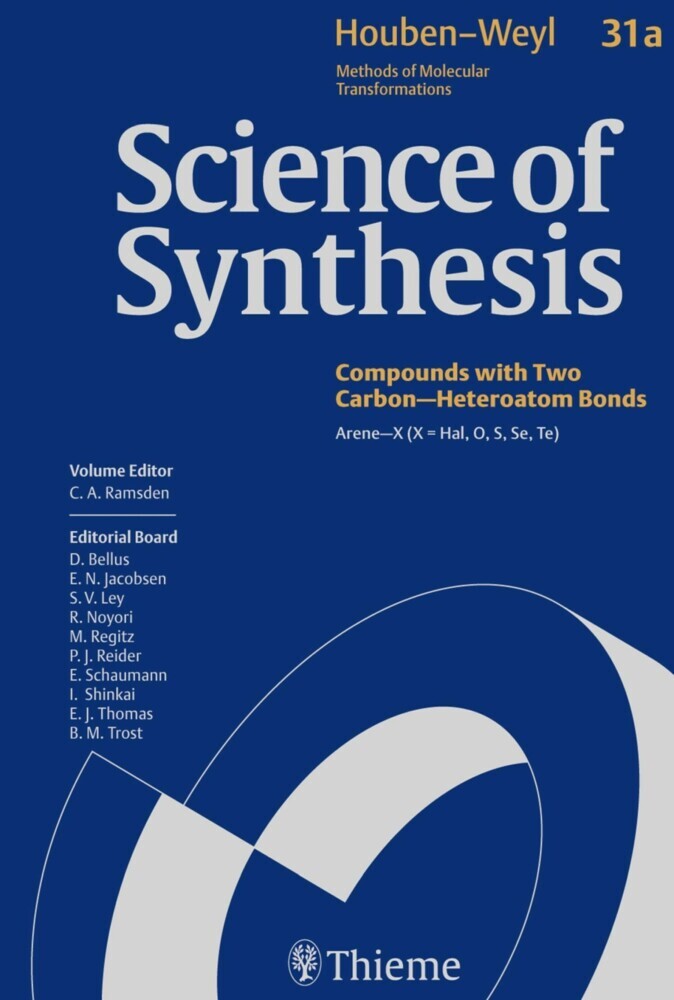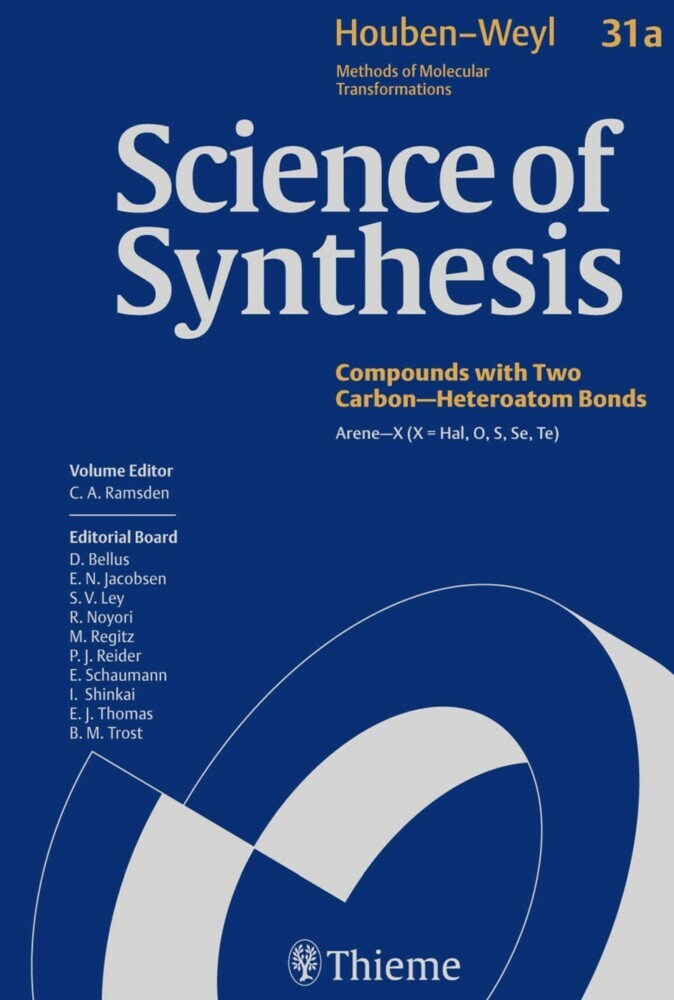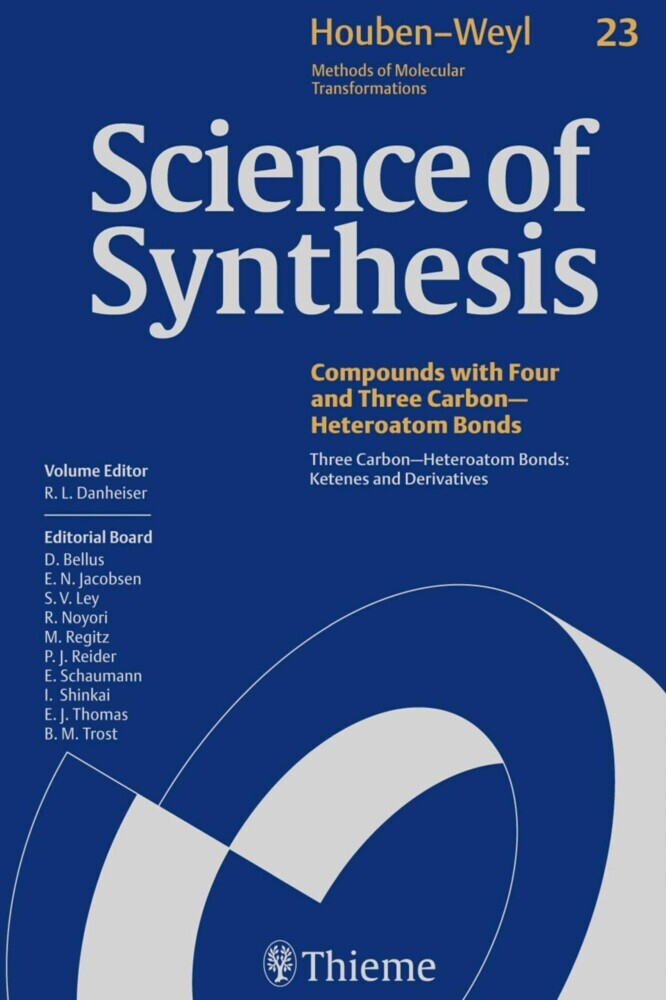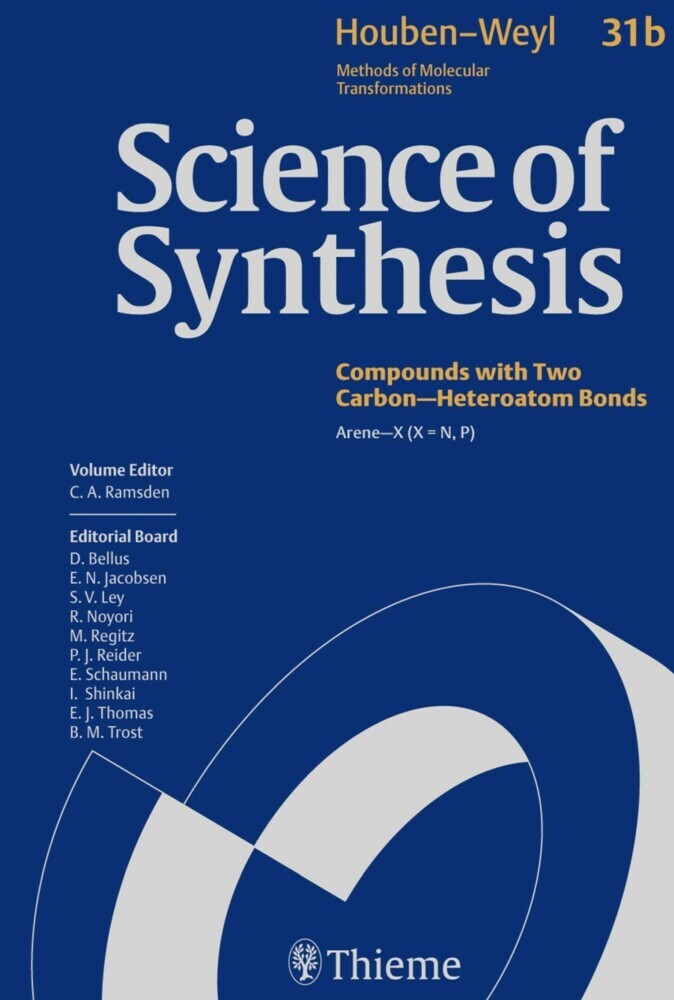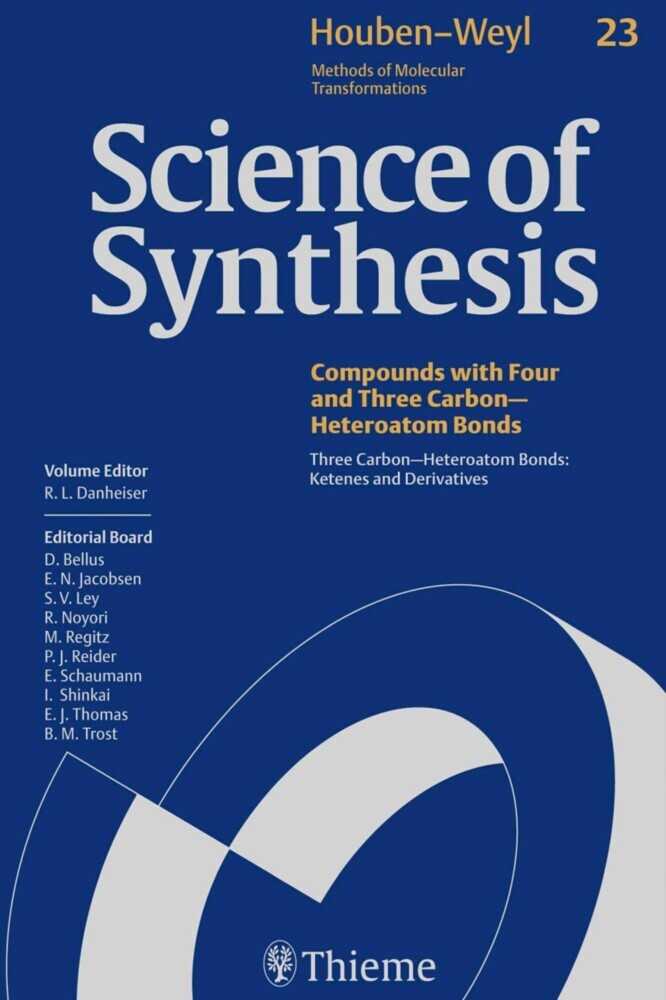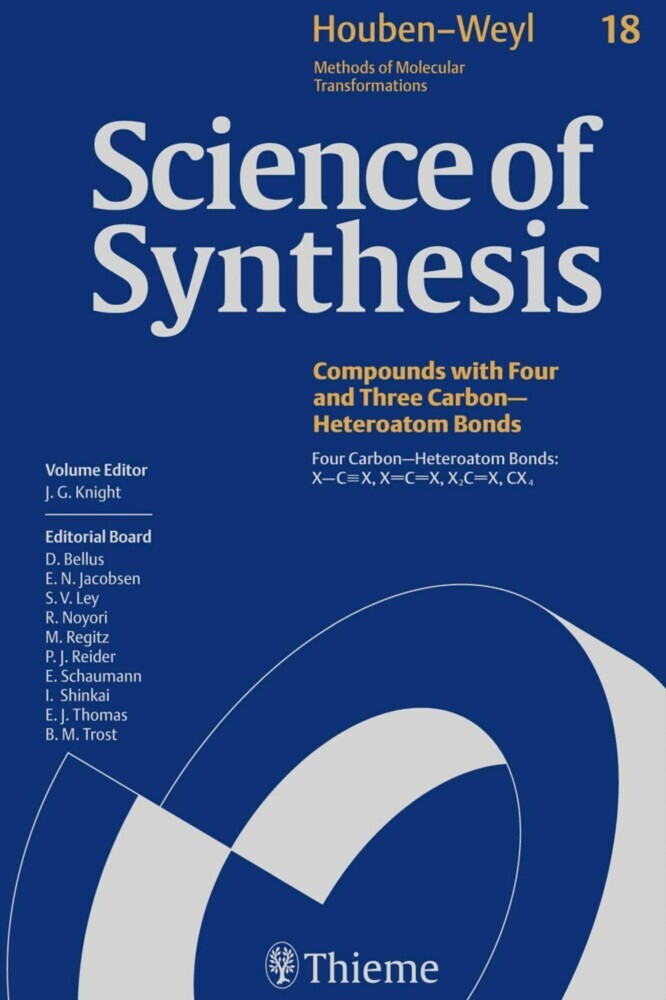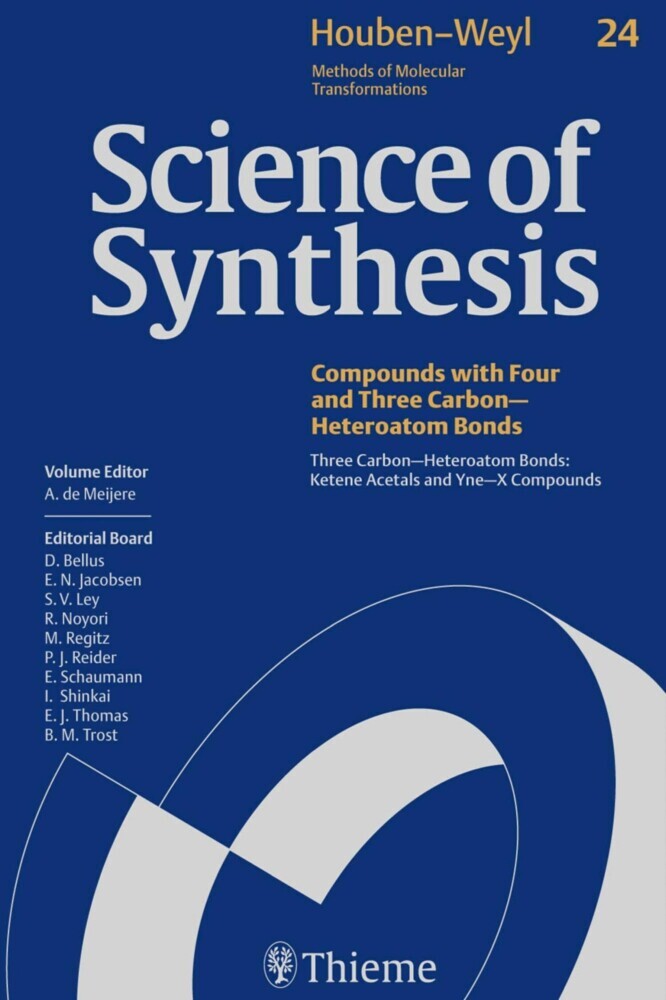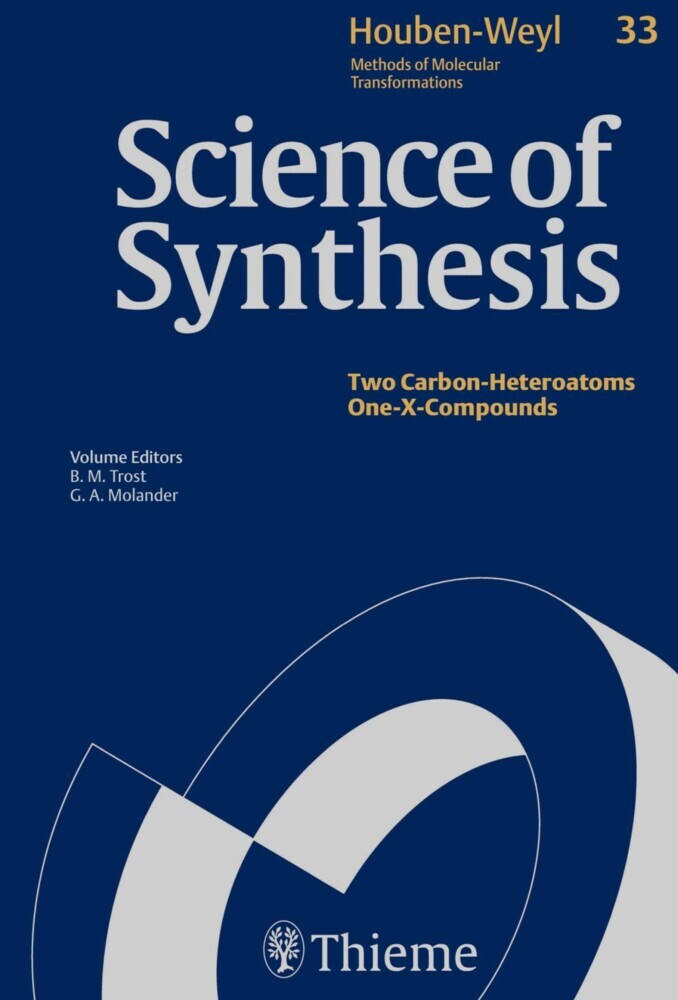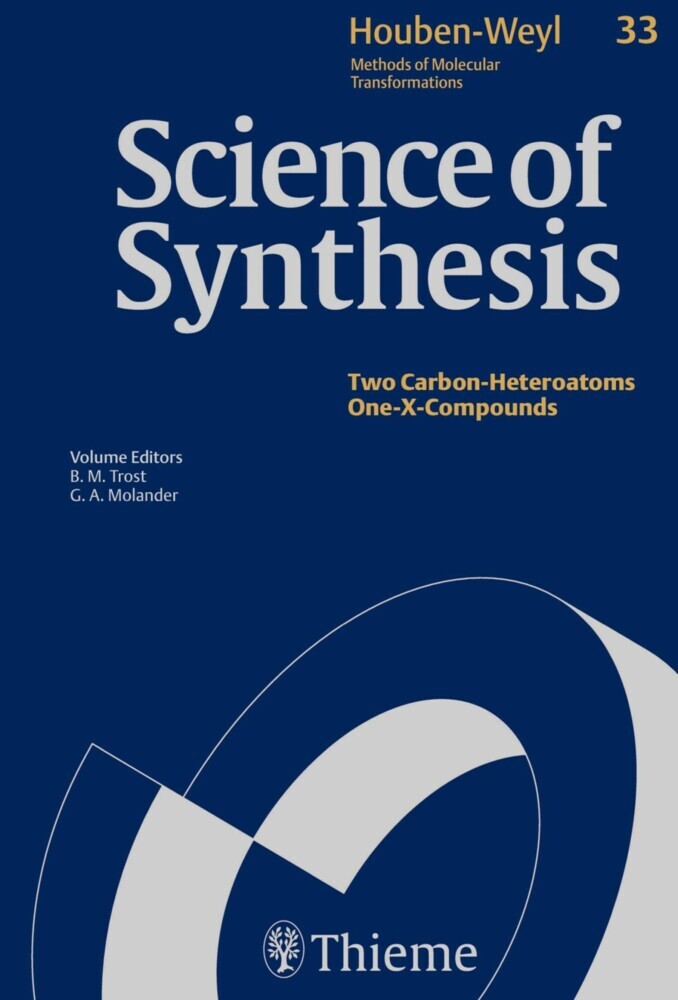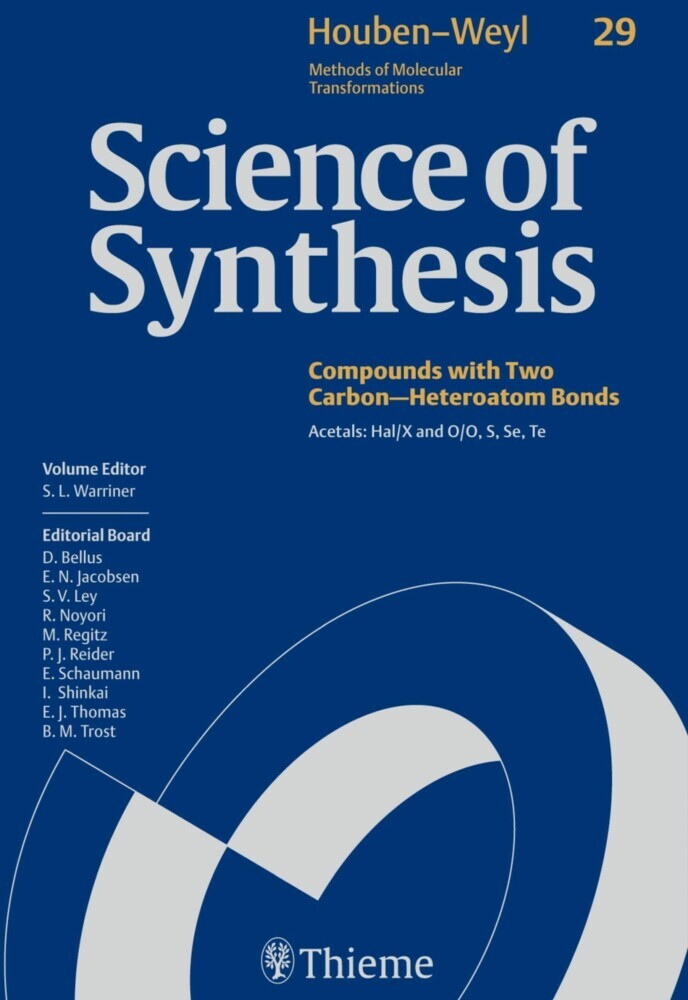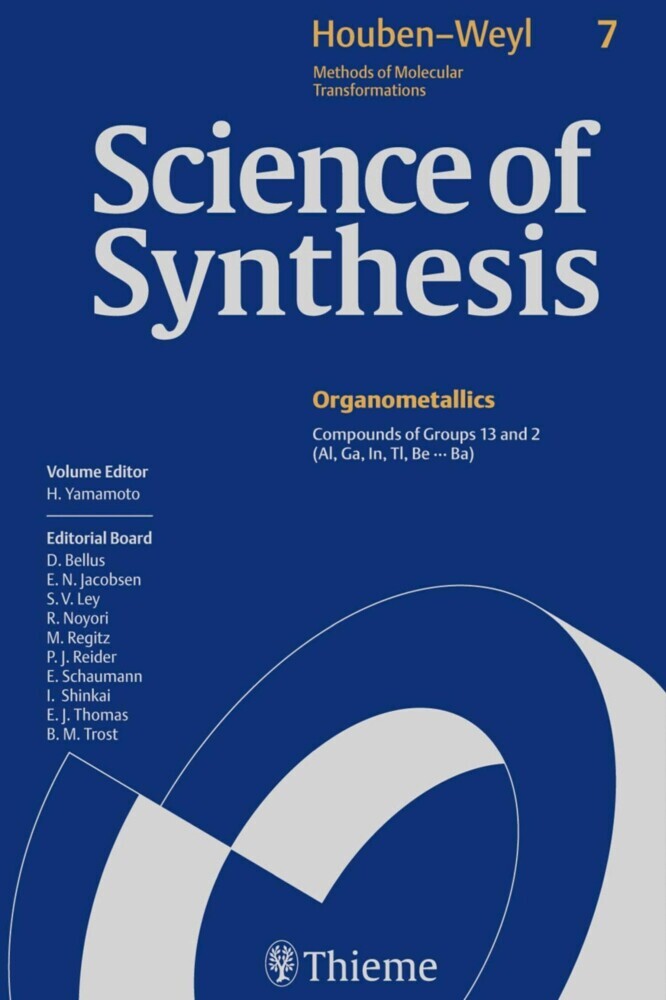Science of Synthesis: Houben-Weyl Methods of Molecular Transformations Vol. 31a
Arene-X (X=Hal, O, S, Se, Te)
Science of Synthesis: Houben-Weyl Methods of Molecular Transformations Vol. 31a
Arene-X (X=Hal, O, S, Se, Te)
Science of Synthesis: Houben-Weyl Methods of Molecular Transformations is the entirely new edition of the acclaimed reference series Houben-Weyl, the standard synthetic chemistry resource since 1909. This new edition is published in English and will comprise 48 volumes published between the years 2000 and 2008.
Science of Synthesis is a quality reference work developed by a highly esteemed editorial board to provide a comprehensive and critical selection of reliable organic and organometallic synthetic methods. This unique resource is designed to be the first point of reference when searching for a synthesis strategy.
- Contains the expertise of presently 400 leading chemists worldwide
- Critically evaluates the preparative applicability and significance of the synthetic methods
- Discusses relevant background information and provides detailed experimental procedures
For full information on the Science of Synthesis series, visit the Science of Synthesis Homepage
1;Science of Synthesis - Volume 31a: Arene--X (X = Hal, O, S, Se, Te);1 1.1;Title page;3 1.2;Imprint;5 1.3;Preface;6 1.4;Volume Editor's Preface;8 1.5;Overview;10 1.6;Table of Contents;14 1.7;Introduction;52 1.8;31.1 Product Class 1: Fluoroarenes;72 1.8.1;31.1.1 Synthesis of Product Class 1;75 1.8.1.1;31.1.1.1 Synthesis by Substitution of Hydrogen;75 1.8.1.1.1;31.1.1.1.1 Method 1: Direct Fluorination with Elemental Fluorine;75 1.8.1.1.2;31.1.1.1.2 Method 2: Reaction with Electrophilic N--F Reagents;82 1.8.1.1.2.1;31.1.1.1.2.1 Variation 1: With 1-Fluoropyridinium Salts;82 1.8.1.1.2.2;31.1.1.1.2.2 Variation 2: With 1-(Chloromethyl)-4-fluoro-1,4-diazoniabicyclo[2.2.2]octane Bis(tetrafluoroborate);85 1.8.1.1.2.3;31.1.1.1.2.3 Variation 3: With Other Electrophilic N--F Reagents;86 1.8.1.1.3;31.1.1.1.3 Method 3: Reaction with Xenon Difluoride;87 1.8.1.1.4;31.1.1.1.4 Method 4: Reaction with Organic Hypofluorites;88 1.8.1.1.5;31.1.1.1.5 Method 5: Reaction with Cesium Fluoroxysulfate;92 1.8.1.2;31.1.1.2 Synthesis by Substitution of Organometallic Groups;93 1.8.1.2.1;31.1.1.2.1 Method 1: Reaction of Aryllithium Derivatives;93 1.8.1.2.2;31.1.1.2.2 Method 2: Reaction of Phenylmagnesium Halides;94 1.8.1.2.3;31.1.1.2.3 Method 3: Reactions of Aryl--Group 14 Derivatives;95 1.8.1.3;31.1.1.3 Synthesis by Substitution of Halogen Atoms;96 1.8.1.3.1;31.1.1.3.1 Method 1: Reaction with Alkali Metal Fluorides;97 1.8.1.4;31.1.1.4 Synthesis by Substitution of Sulfur;103 1.8.1.4.1;31.1.1.4.1 Method 4: Reaction of Sulfonyl Derivatives;103 1.8.1.5;31.1.1.5 Synthesis by Substitution of Nitrogen;104 1.8.1.5.1;31.1.1.5.1 Method 1: Replacement of Nitro Groups;104 1.8.1.5.1.1;31.1.1.5.1.1 Variation 1: Reaction with Potassium Fluoride;104 1.8.1.5.1.2;31.1.1.5.1.2 Variation 2: Reaction with Tetraalkylammonium Fluorides;107 1.8.1.5.2;31.1.1.5.2 Method 2: Replacement of Diazo Groups;107 1.8.1.5.2.1;31.1.1.5.2.1 Variation 1: Reaction with Hydrogen Fluoride;108 1.8.1.5.2.2;31.1.1.5.2.2 Variation 2: Reaction with Hydrogen Fluoride/Pyridine Mixtures;109 1.8.1.5.2.3;31.1.1.5.2.3 Variation 3: Reaction of Diazonium Tetrafluoroborates;112 1.8.1.5.2.4;31.1.1.5.2.4 Variation 4: Reaction of Diazonium Hexafluoroantimonates;114 1.8.1.5.2.5;31.1.1.5.2.5 Variation 5: Reaction with Nitrosonium Tetrafluoroborate;115 1.8.1.5.2.6;31.1.1.5.2.6 Variation 6: Reaction of Triazenes;116 1.8.1.6;31.1.1.6 Synthesis by Elimination;117 1.8.1.6.1;31.1.1.6.1 Method 1: Elimination of Hydrogen Fluoride;117 1.8.1.6.2;31.1.1.6.2 Method 2: Elimination of Fluorine;117 1.8.1.7;31.1.1.7 Synthesis with Retention of Fluorine;119 1.8.1.7.1;31.1.1.7.1 Method 1: Reactions of Fluoroarenes;119 1.8.1.7.2;31.1.1.7.2 Method 2: Reactions of Perfluoroarenes;121 1.9;31.2 Product Class 2: Chloroarenes;130 1.9.1;31.2.1 Synthesis of Product Class 2;130 1.9.1.1;31.2.1.1 Synthesis by Substitution;130 1.9.1.1.1;31.2.1.1.1 Method 1: Electrophilic Chlorination;131 1.9.1.1.1.1;31.2.1.1.1.1 Variation 1: Of Phenols and Anisoles;131 1.9.1.1.1.2;31.2.1.1.1.2 Variation 2: Of Anilines and Acetanilides;133 1.9.1.1.1.3;31.2.1.1.1.3 Variation 3: Of Alkylbenzenes;135 1.9.1.1.1.4;31.2.1.1.1.4 Variation 4: Of Polycyclic Aromatics;136 1.9.1.1.2;31.2.1.1.2 Method 2: The Sandmeyer Reaction;137 1.9.1.1.3;31.2.1.1.3 Method 3: Substitution of a Nitro Group;138 1.9.1.1.4;31.2.1.1.4 Method 4: Substitution of a Phenolic Hydroxy Group;139 1.9.1.2;31.2.1.2 Synthesis by Elimination;140 1.9.1.2.1;31.2.1.2.1 Method 1: Dehydrohalogenation;140 1.9.1.2.2;31.2.1.2.2 Method 2: Dehalogenation;141 1.9.1.2.3;31.2.1.2.3 Method 3: Pyrolytic Loss of a Small Molecule;142 1.9.1.2.4;31.2.1.2.4 Method 4: Transition-Metal-Catalyzed Decarbonylation;143 1.9.1.3;31.2.1.3 Synthesis by Cycloaddition;144 1.9.1.3.1;31.2.1.3.1 Method 1: Cycloadditions Reactions of Tetrachlorothiophene Dioxide;145 1.9.1.3.2;31.2.1.3.2 Method 2: Cobalt-Catalyzed Reactions;146 1.9.1.4;31.2.1.4 Synthesis by Rearrangement;146 1.9.1.4.1;31.2
Bellus, Daniel
Ramsden, Christopher A.
| ISBN | 9783131720610 |
|---|---|
| Artikelnummer | 9783131720610 |
| Medientyp | E-Book - PDF |
| Copyrightjahr | 2014 |
| Verlag | Georg Thieme Verlag KG |
| Umfang | 1312 Seiten |
| Sprache | Englisch |
| Kopierschutz | Digitales Wasserzeichen |

